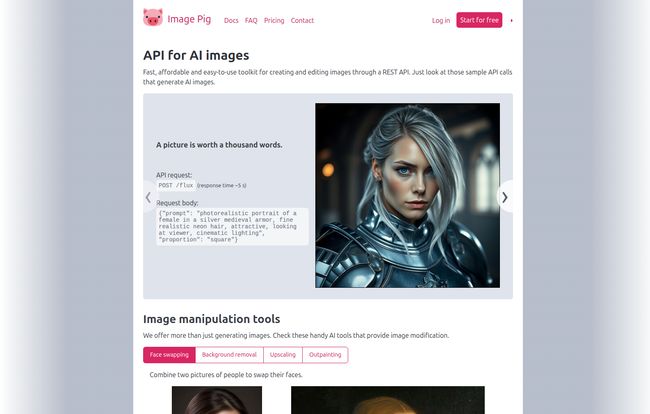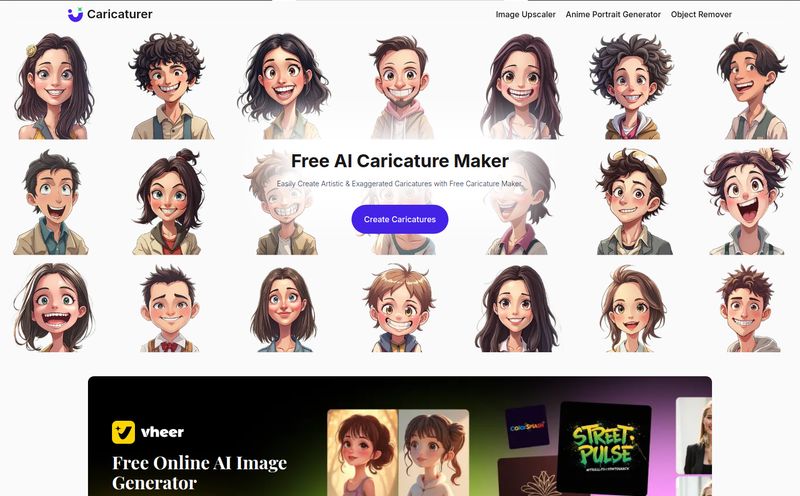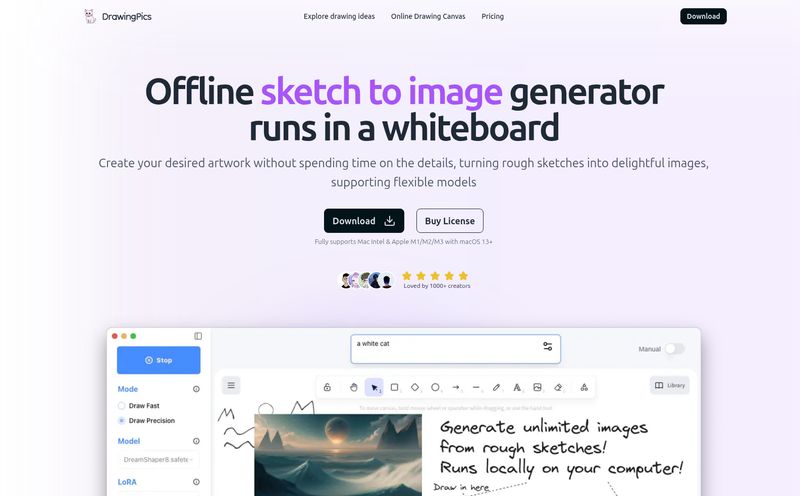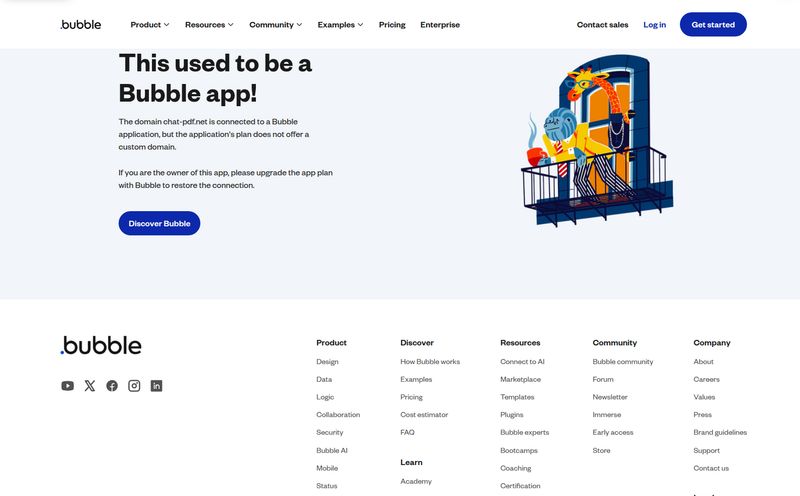If you're a developer, an indie hacker, or running a small agency, you’ve probably had that twinkle in your eye. That moment you think, "You know what would be cool? If my app could generate unique images on the fly." And then, reality hits you like a ton of bricks. The cost, the complexity, the sheer headache of trying to wrangle a Stable Diffusion model on your own server... it's enough to make you give up and just use another stock photo.
I’ve been there. I've spent more late nights than I care to admit wrestling with GPU instances and Python dependencies. So when a tool like Image Pig comes along, promising an "easy-to-use API for generating and manipulating AI images," my skepticism-meter goes up, but so does my hope.
Is this just another API with a cute name, or is it the tool that finally lowers the barrier to entry for a genuinely powerful feature? I decided to take a look under the hood.
So, What Is Image Pig, Really?
First off, let's be clear what this isn't. This isn't a consumer-facing app like Midjourney or DALL-E where you type prompts into a Discord channel. Image Pig is for the builders. The creators. It’s a clean REST API that you plug into your own projects.
Think of it like this: you're building a car, and you need an engine. You could try to forge one yourself from scratch (good luck with that), or you could buy a finely tuned, reliable engine from a specialist and just drop it in. Image Pig is that engine. They've done the hard work of curating the AI models, managing the hardware, and wrapping it all up in a simple API call.
The homepage boasts about getting started in minutes, not weeks, and frankly, that's a bold claim in the AI space. They provide prepared packages for languages most of us are using anyway—Python, Node.js, Rust, and PHP—which is a huge plus. No need to reinvent the wheel with cURL requests if you don't want to.

Visit Image Pig
The Features That Actually Matter
An API is only as good as its endpoints. So what can you actually do with Image Pig? It’s more than just a one-trick pony (or, uh, pig).
AI Image Generation from a Simple Prompt
This is the main event, of course. The ability to send a text prompt and get an image back is the foundation of the whole thing. The example on their site is a classic: `photorealistic portrait of a female cyborg, intricate, elegant...`. It's what you'd expect. The magic here isn't just that it works, but that they claim to support prompts in 30 languages. That's a pretty big deal for anyone building an app with a global user base. It's a small detail that shows they're thinking beyond the English-speaking world.
More Than Just Making Pictures: The Manipulation Toolkit
This is where things get really interesting for me. Image generation is cool, but a lot of practical applications need more nuance. Image Pig offers a suite of manipulation tools that solve real-world problems:
- Face Swapping: A bit of fun, sure, but also potentially useful for virtual try-on apps or personalized avatars. (And let's be real, who hasn't wanted to try a face swap on a historical painting? Just me?)
- Background Removal: This is the unsung hero for so many businesses. Anyone in e-commerce knows what a pain it is to get clean product shots. An API that can do this automatically is worth its weight in gold. Seriously.
- Upscaling: AI-generated images can sometimes be a bit... small. An upscaling tool is essential to get those images to a high-resolution, usable quality for things like blog headers or prints.
- Outpainting: This is a more creative tool, allowing the AI to imagine what's outside the frame of an existing image. You can extend landscapes, change aspect ratios, and get really creative. It’s like the 'un-crop' tool we've always wanted.
Let's Talk Money: The Image Pig Pricing Structure
Okay, this is often the make-or-break moment. A great tool with terrible pricing is... well, a terrible tool. I took a look at their pricing page, and I've got to say, it seems pretty reasonable.
Here’s a quick breakdown of their plans (prices are in EUR on the site, which is about what you'd expect for a company that seems to have European roots):
| Plan | Monthly Price | Included Images | Rate Limit (Calls/Min) |
|---|---|---|---|
| Free | €0 | 30 | 2 |
| Basic | €8 | 1,000 | 4 |
| Standard | €29 | 4,000 | 10 |
| Premium | €177 | 30,000 | 60 |
The Free tier is perfect. It’s not a gimmick; 30 images is enough to actually build a proof-of-concept and see if teh API works for your project. The Basic plan at €8 for 1,000 images is incredibly accessible for small projects or startups. You're not breaking the bank to add a powerful new feature.
Two things to be aware of: rate limiting and storage. The rate limits are pretty low on the cheaper plans (2 calls/minute on Free). This is fine for testing or low-traffic features, but you'll need to upgrade if your app gets any real traction. Also, image storage is only included on the Standard and Premium plans. For Free and Basic, you'll need to handle the image storage yourself, probably by piping them to your own S3 bucket or similar service. That's a fair tradeoff, in my opinion.
My Take: Who Is This API Actually For?
After looking it all over, I've got a pretty clear picture. Image Pig isn't trying to compete with massive enterprise solutions. Its perfect for:
- Indie Developers & Hackers: Building a cool side project? The free and basic tiers are practically made for you.
- Startups: Want to add an AI feature to your MVP without hiring a machine learning engineer? This is your fast track.
- Content Creators & Agencies: Imagine building an internal tool to auto-generate blog post headers or social media graphics. This could be the engine for that.
- E-commerce Shops: The background removal tool alone could be integrated into a product upload workflow to save countless hours.
The testimonial on their site from Marek Šťastka says,
From the first minute, I was amazed at how fast and easy Image Pig was to use.
That tracks. The entire vibe of the platform is about removing friction for developers who want to ship, not tinker.
So, Should You Go with the Pig?
Look, the AI-as-a-service space is getting crowded. But Image Pig seems to have found a sweet spot. It's not the most overwhelmingly powerful platform on the planet, but it might be one of the most practical and accessible.
The combination of straightforward generation, useful manipulation tools, and developer-friendly pricing makes it a very compelling package. The limitations, like rate limits and storage on lower tiers, are transparent and feel fair for the price.
My final verdict? If you’re a developer who wants to integrate AI image capabilities into your app without the massive upfront investment of time and money, you should absolutely give Image Pig a try. The free plan makes it a no-brainer to at least kick the tires. It feels less like a gamble and more like a smart shortcut.
Frequently Asked Questions
- 1. Is Image Pig free to use?
- Yes! Image Pig offers a free plan that includes 30 generated images per month, along with access to most of their tools. It's ideal for testing and small personal projects.
- 2. What programming languages does Image Pig support?
- They provide official packages to make integration easy for Python, Node.js, Rust, and PHP. Since it's a REST API, you can technically use it with any language that can make an HTTP request.
- 3. Can I use images from Image Pig for commercial projects?
- Yes. The site mentions that they use curated AI models with permissive licenses, which means you're generally free to use the images you generate for commercial purposes. As always, though, read the fine print for your specific use case.
- 4. What happens if I go over my monthly image limit?
- The pricing page mentions overage charges for each plan (e.g., €12 per 1,000 images over on the Basic plan). Your service won't be cut off, but you'll be billed for the extra usage, similar to how a cell phone plan works.
- 5. What's the difference between Image Pig and a tool like Midjourney?
- Midjourney is a consumer product for people to create images for themselves. Image Pig is a developer tool (an API) that allows you to build image generation and manipulation features into your own applications.
- 6. Do I need to store the images on my own server?
- On the Free and Basic plans, yes, you'll need to handle storage yourself. The Standard and Premium plans include image storage as part of the service.



